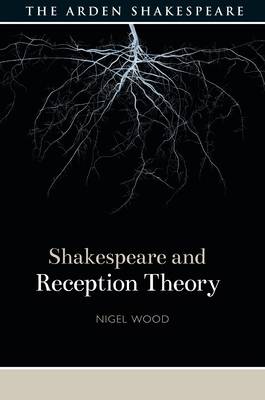
- Afhalen na 1 uur in een winkel met voorraad
- Gratis thuislevering in België vanaf € 30
- Ruim aanbod met 7 miljoen producten
- Afhalen na 1 uur in een winkel met voorraad
- Gratis thuislevering in België vanaf € 30
- Ruim aanbod met 7 miljoen producten
Zoeken
€ 195,45
+ 390 punten
Uitvoering
Omschrijving
Arden Shakespeare and Theoryprovides a comprehensive analysis of the theoretical developments that have dominated Shakespeare studies in recent years, as well as those that are emerging at the present moment. Each volume provides:
- a clear definition of a particular theory;
- a survey of its major theorists and critics;
- an analysis of its significance in Shakespeare studies;
- a summary of relevant political, social and economic contexts;
- a wealth of suggested resources for further investigation.
Reception Theory provides readers with a unique overview and understanding of the ways in which both audiences and readers have reacted to Shakespeare's works historically and in the present. This study demonstrates how recent emphases on a reader's and a spectator's role in the creation of meaning might allow us to contemplate Shakespeare's work in fresh and often provocative ways. Among the plays included as case studies are A Midsummer Night's Dream, Hamlet, The Tempest, King Lear and Henry V. Shakespeare and Reception Theory pays close attention to early modern modes of interaction in the playhouse alongside more recent assumptions that underlie spectating and performing.
- a clear definition of a particular theory;
- a survey of its major theorists and critics;
- an analysis of its significance in Shakespeare studies;
- a summary of relevant political, social and economic contexts;
- a wealth of suggested resources for further investigation.
Reception Theory provides readers with a unique overview and understanding of the ways in which both audiences and readers have reacted to Shakespeare's works historically and in the present. This study demonstrates how recent emphases on a reader's and a spectator's role in the creation of meaning might allow us to contemplate Shakespeare's work in fresh and often provocative ways. Among the plays included as case studies are A Midsummer Night's Dream, Hamlet, The Tempest, King Lear and Henry V. Shakespeare and Reception Theory pays close attention to early modern modes of interaction in the playhouse alongside more recent assumptions that underlie spectating and performing.
Specificaties
Betrokkenen
- Auteur(s):
- Uitgeverij:
Inhoud
- Aantal bladzijden:
- 208
- Taal:
- Engels
- Reeks:
Eigenschappen
- Productcode (EAN):
- 9781350112100
- Verschijningsdatum:
- 24/12/2020
- Uitvoering:
- Hardcover
- Formaat:
- Genaaid
- Afmetingen:
- 127 mm x 203 mm
- Gewicht:
- 331 g

Alleen bij Standaard Boekhandel
+ 390 punten op je klantenkaart van Standaard Boekhandel
Beoordelingen
We publiceren alleen reviews die voldoen aan de voorwaarden voor reviews. Bekijk onze voorwaarden voor reviews.








